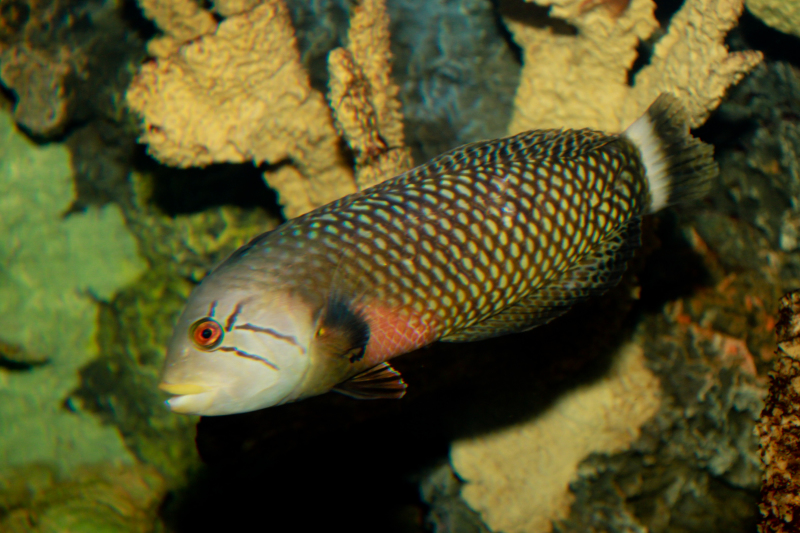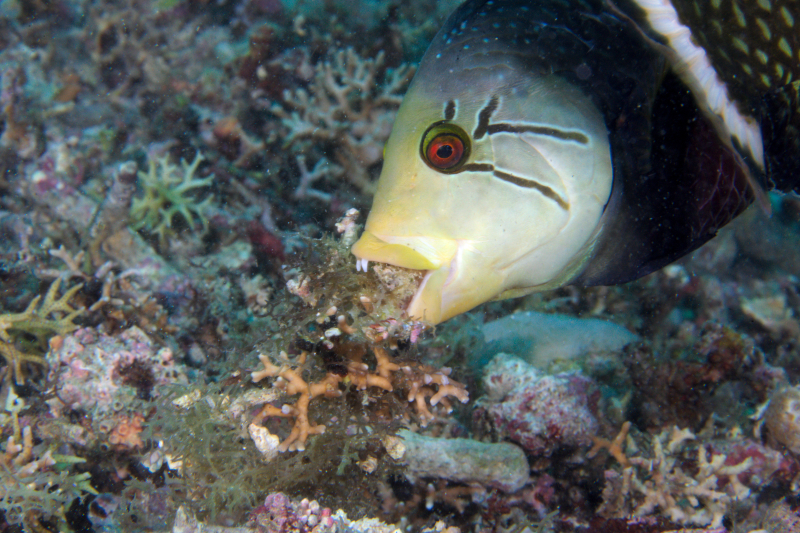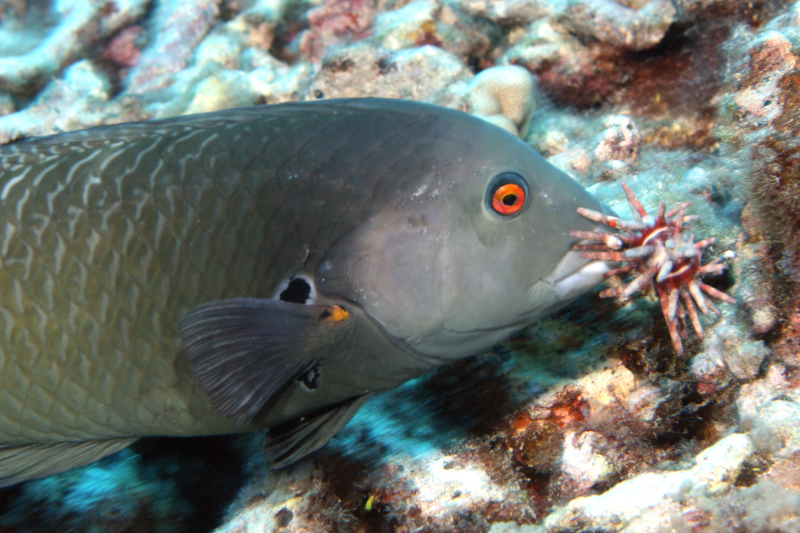�
�
�
���
Novaculichthys taeniourus
Rock-mover Wrasse
Kingdom
Animalia
Phylum
Chordata
Class
Actinopterygii
Order
Perciformes
Family
Labridae
Genus
Novaculichthys
Species
Novaculichthys taeniourus
Colours
Distinguishing features
Distinguishing features still need to be specified.
Size
- Up to 27 cm (Length)
Depth range
- Depth range data is not yet available.
Synonyms
Interesting facts
- Many fish sleep in the sand at night to stay hidden. When there is not much sand, the Rockmover wrasse will actually build rubble mounds to hide in. The Juveniles will pretend to be a plant to escape danger and the adults work as a team; one removes the rubble, the other races in to grab the prey that was hiding under it.
Distribution
Distribution and habitat preferences
It can be found in marine environments.Web resources
References
- Allen and M.V. Erdmann, G.R. (2012). Reef fishes of the East Indies. Volumes I-III in: Reef fishes of the East Indies. Tropical Reef Research, Perth, Australia. LIRS catalog number 90162.
- Elliott, J.P. and D.R. Bellwood (2003). Alimentary tract morphology and diet in three coral reef fish families, Journal of Fish Biology, 63: 1598-1609. LIRS catalog number 876.
- Ferry-Graham, L.A., P.C. Wainwright, M.W. Westneat and D.R. Bellwood (2002). Mechanisms of benthic prey capture in wrasses (Labridae), Marine Biology, 141: 819-830. LIRS catalog number 790.
- View all references








